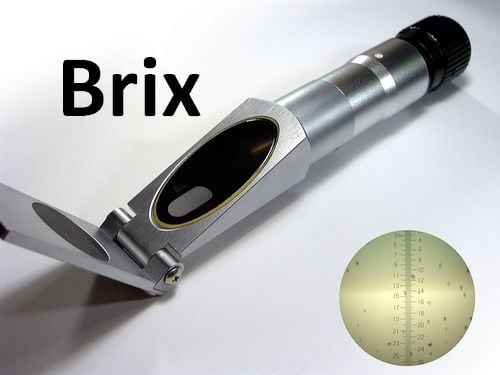Meadowlark
No N-P-K Required
- Joined
- Feb 5, 2019
- Messages
- 2,768
- Reaction score
- 2,328
- Location
- East Texas
- Hardiness Zone
- old zone 8b/new zone 9a
- Country

Just getting into the use of the refractive index (RI) to measure the quality of the veggies I grow.
My reasons for growing my own veggies are 1) superior taste and 2) high nutrient density. My soil test lab assigns a nutrient density score to each soil test I send in, and I have found, not surprisingly, that the higher that score the higher the taste and quality of the vegetable produced from it and presumably the nutrient density.
However, I've been unable to directly measure the taste or nutrient density of my produce. I have found one can easily measure the refractive index (RI) of my produce in terms of the Brix value. The Brix value tells you how much dissolved sugar is in a liquid solution. Get a drop of liquid from your veggies, put it on a Brix meter and magic you get the Brix value. This value is indicated in degrees Brix. A high Brix value indicates a good taste and quality of your crop. It also is indicative, research shows, the higher the Brix the sweeter the taste, the longer the veggies can be stored, the more resistant to insect attacks, and the higher the nutrient density.
Research shows also that measuring the RI has many limitations. I can imagine a whole range of tests that I can perform using this technique. I have the refractometer and some Brix charts and just now jumping into this world.
To those of you who measure RI through the Brix value, please share your experiences good or bad with this technique. Thanks.
My reasons for growing my own veggies are 1) superior taste and 2) high nutrient density. My soil test lab assigns a nutrient density score to each soil test I send in, and I have found, not surprisingly, that the higher that score the higher the taste and quality of the vegetable produced from it and presumably the nutrient density.
However, I've been unable to directly measure the taste or nutrient density of my produce. I have found one can easily measure the refractive index (RI) of my produce in terms of the Brix value. The Brix value tells you how much dissolved sugar is in a liquid solution. Get a drop of liquid from your veggies, put it on a Brix meter and magic you get the Brix value. This value is indicated in degrees Brix. A high Brix value indicates a good taste and quality of your crop. It also is indicative, research shows, the higher the Brix the sweeter the taste, the longer the veggies can be stored, the more resistant to insect attacks, and the higher the nutrient density.
Research shows also that measuring the RI has many limitations. I can imagine a whole range of tests that I can perform using this technique. I have the refractometer and some Brix charts and just now jumping into this world.
To those of you who measure RI through the Brix value, please share your experiences good or bad with this technique. Thanks.




